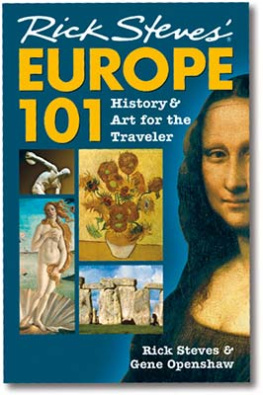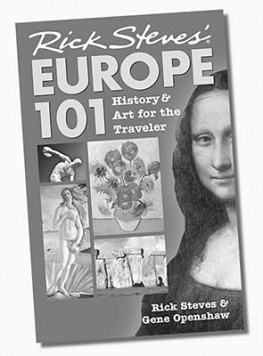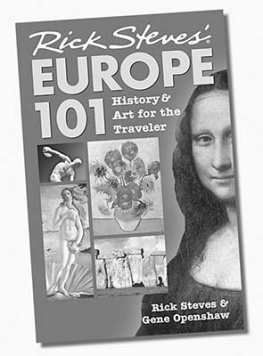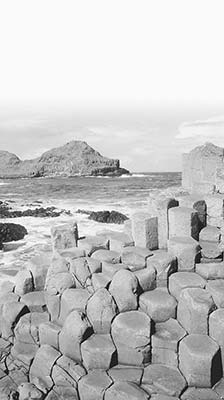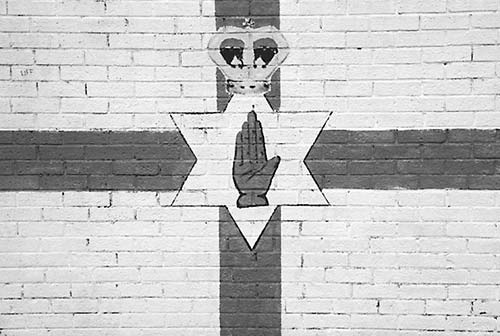Rick Steves
SNAPSHOT
Northern Ireland
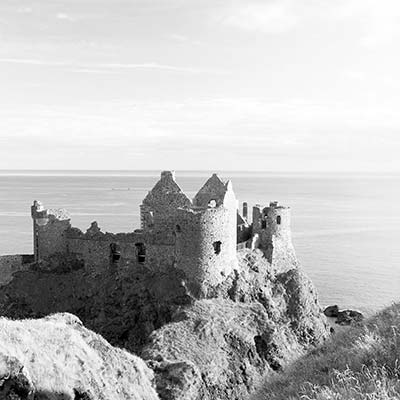
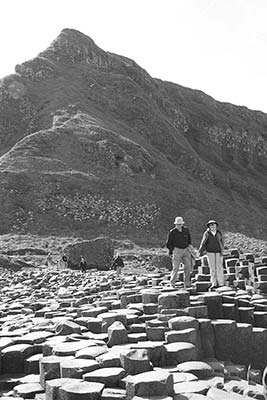
This Snapshot guide, excerpted from my guidebook Rick Steves Ireland, introduces you to Northern Irelandan underrated and often overlooked part of the Emerald Isle that surprises visitors with its friendliness. Ive included a lively mix of cities (Belfast and Derry), smaller towns (Portrush and Bangor), and plenty of lazy countryside sights. History is palpable atop the brooding walls of Derry and in the remote and traditional County Donegal (actually just over the border, in the Republic of Ireland). And, while its perfectly safe for a visit, Northern Ireland gives you a feel for Irelands 20th-century Troubles as nowhere elseespecially the provocative political murals in Derrys Bogside neighborhood, and on Belfasts Falls Road and Shankill Road. But youll also find enjoyable escapes: From the breezy seaside resort of Portrush, you can visit the scenic Antrim Coastwhich boasts the unique staggered-columns geology of the Giants Causeway, the spectacularly set Dunluce Castle, and a chance to sample whiskey at Old Bushmills Distillery.
To help you have the best trip possible, Ive included the following topics in this book:
Planning Your Time, with advice on how to make the most of your limited time
Orientation, including tourist information (abbreviated as TI), tips on public transportation, local tour options, and helpful hints
Sights with ratings:
Dont miss
Try hard to see
Worthwhile if you can make it
No ratingWorth knowing about
Sleeping and Eating, with good-value recommendations in every price range
Connections, with tips on trains, buses, and driving
Practicalities, near the end of this book, has information on money, staying connected, hotel reservations, transportation, and more.
To travel smartly, read this little book in its entirety before you go. Its my hope that this guide will make your trip more meaningful and rewarding. Traveling like a temporary local, youll get the absolute most out of every mile, minute, and dollar.
Happy travels!
NORTHERN IRELAND
The island of Ireland was once the longest-held colony of Great Britain. Unlike its Celtic cousins, Scotland and Wales, Ireland has always been distant from Londona distance due more to its Catholicism than the Irish Sea.
Four hundred years ago, Protestant settlers from England and Scotland were strategically planted in Catholic Ireland to help assimilate the island into the British economy. In 1620, the dominant English powerbase in London first felt entitled to call both islandsIreland as well as Britainthe British Isles on maps (a geographic label that irritates Irish Nationalists to this day). These Protestant settlers established their own cultural toehold on the island, laying claim to the most fertile land. Might made right, and God was on their side. Meanwhile, the underdog Catholic Irish held strong to their Gaelic culture on their ever-diminishing, boggy, rocky farms.
Over the centuries, British rule hasnt been easy. By the beginning of the 20th century, the sparse Protestant population could no longer control the entire island. When Ireland won its independence in 1921 (after a bloody guerrilla war against British rule), 26 of the islands 32 counties became the Irish Free State, ruled from Dublin with dominion status in the British Commonwealthsimilar to Canadas level of sovereignty. In 1949, these 26 counties left the Commonwealth and became the Republic of Ireland, severing all political ties with Britain. Meanwhile, the six remaining northeastern countiesthe only ones with a Protestant majoritychose not to join the Irish Free State and remained part of the UK.
But embedded within these six countiesnow joined as the political entity called Northern Irelandwas a large, disaffected Catholic minority who felt theyd been sold down the river by the drawing of the new international border. Their political opponents were the UnionistsProtestants eager to defend the union with Britain, who were primarily led by two groups: the long-established Orange Order, and the military muscle of the newly mobilized Ulster Volunteer Force (UVF). This was countered on the Catholic side by the Irish Republican Army (IRA), who wanted all 32 of Irelands counties to be united in one Irish nationtheir political goals were Nationalist.
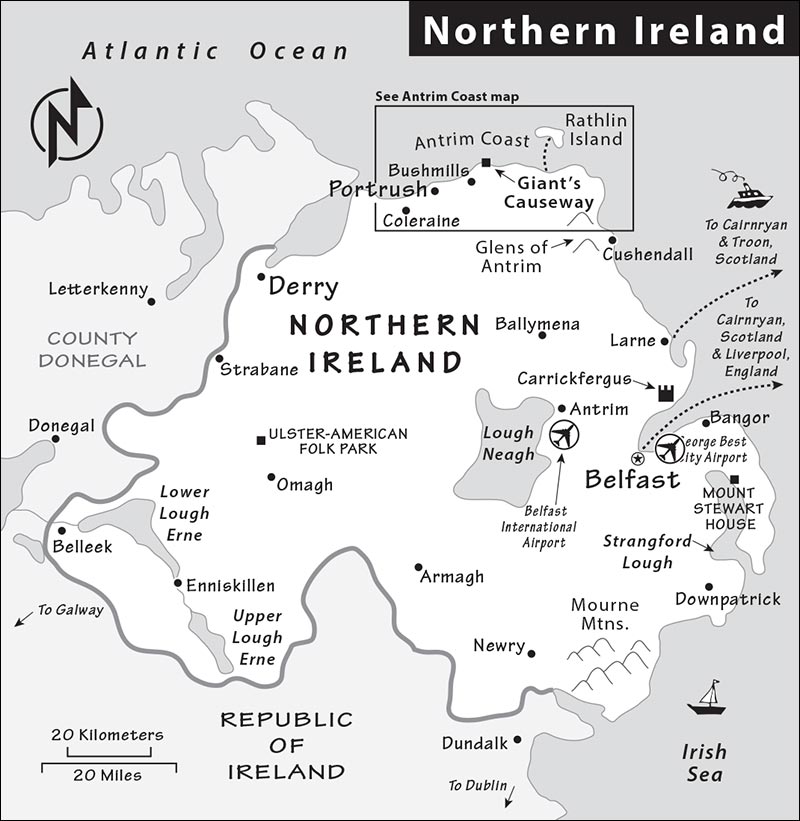
In World War II, the Republic stayed neutral while the North enthusiastically supported the Allied causewinning a spot close to Londons heart. Derry (a.k.a. Londonderry) became an essential Allied convoy port, while Belfast lost more than 800 civilians during four Luftwaffe bombing raids in 1941. After the war, the split between North and South seemed permanent, and Britain invested heavily in Northern Ireland to bring it solidly into the UK fold.
In the Republic of Ireland (the South), where 94 percent of the population was Catholic and only 6 percent Protestant, there was a clearly dominant majority. But in the North, at the time it was formed, Catholics were still a sizable 35 percent of the populationenough to demand attention. To maintain the status quo, Protestants considered certain forms of anti-Catholic discrimination necessary. It was this discrimination that led to the Troubles, the conflict that filled headlines from the late 1960s to the late 1990s.
Four hundred years ago (during the Reformation), this was a fight over Protestant and Catholic religious differences. But over the last century, the conflict has been not about faith, but about politics: Will Northern Ireland stay part of the UK, or become part of the Republic of Ireland? The indigenous Irish of Northern Ireland, who generally want to unite with Ireland, happen to be Catholic (like their cousins to the south). The descendants of the Scottish and English settlers, who generally want to remain part of Britain, happen to be Protestant (like their beloved monarch).
Northern Ireland Almanac
Official Name: Since Northern Ireland is not an independent state, there is no official country name. Some call it Ulster, while others label it the Six Counties. Population-wise, its the smallest country of the United Kingdom (the other three are England, Wales, and Scotland).
Population:



